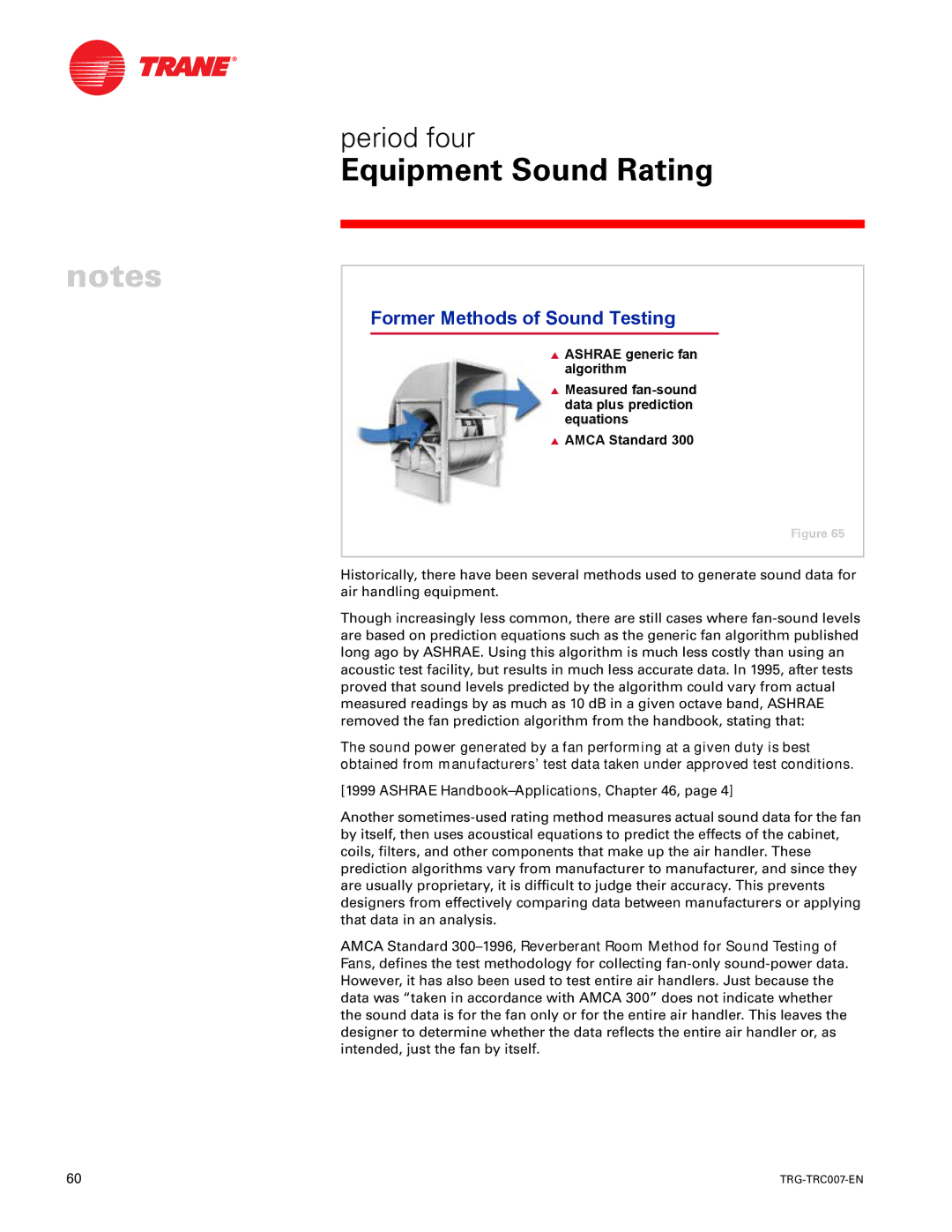period four
Equipment Sound Rating
notes
Former Methods of Sound Testing
I ASHRAE generic fan algorithm
I Measured fan-sound data plus prediction equations
I AMCA Standard 300
Figure 65
Historically, there have been several methods used to generate sound data for air handling equipment.
Though increasingly less common, there are still cases where fan-sound levels are based on prediction equations such as the generic fan algorithm published long ago by ASHRAE. Using this algorithm is much less costly than using an acoustic test facility, but results in much less accurate data. In 1995, after tests proved that sound levels predicted by the algorithm could vary from actual measured readings by as much as 10 dB in a given octave band, ASHRAE removed the fan prediction algorithm from the handbook, stating that:
The sound power generated by a fan performing at a given duty is best obtained from manufacturers’ test data taken under approved test conditions.
[1999 ASHRAE Handbook–Applications, Chapter 46, page 4]
Another sometimes-used rating method measures actual sound data for the fan by itself, then uses acoustical equations to predict the effects of the cabinet, coils, filters, and other components that make up the air handler. These prediction algorithms vary from manufacturer to manufacturer, and since they are usually proprietary, it is difficult to judge their accuracy. This prevents designers from effectively comparing data between manufacturers or applying that data in an analysis.
AMCA Standard 300–1996,Reverberant Room Method for Sound Testing of Fans, defines the test methodology for collecting fan-onlysound-power data. However, it has also been used to test entire air handlers. Just because the data was “taken in accordance with AMCA 300” does not indicate whether the sound data is for the fan only or for the entire air handler. This leaves the designer to determine whether the data reflects the entire air handler or, as intended, just the fan by itself.

